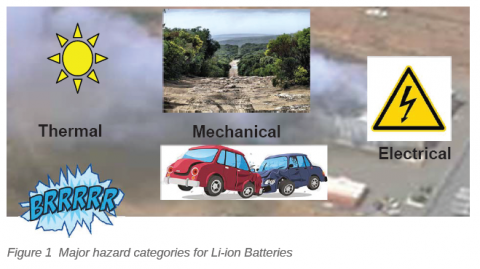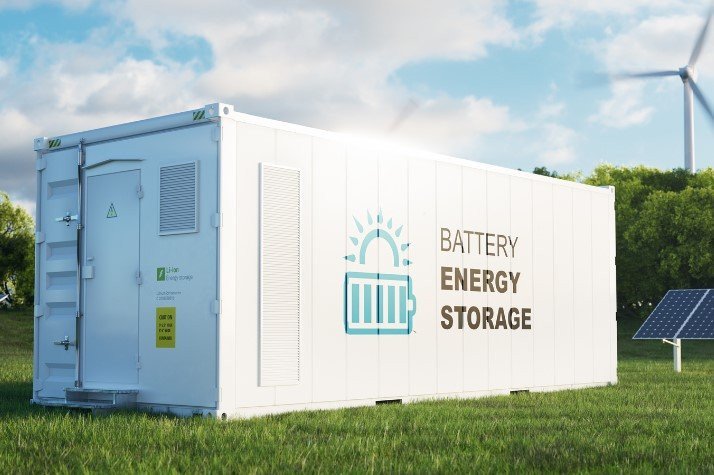Li-ion battery concerns for safe usage
The high energy and power density provided by Li-ion battery chemistry also carries with it the propensity to turn catastrophic if not designed, charged or used in an appropriate manner. Dr Judy Jeevarajan, Research Director, Electrochemical Safety - Underwriters Laboratories Inc., talks about various risk factors and challenges regarding battery safety that need to be addressed for safe usage.
Energy storage in the form of batteries have become an essential part of our everyday life. With their use in consumer devices such as mobile phones, cameras, camcorders, and laptops, to their use in larger applications as in the areas of space, marine, EVs and grid energy storage, the battery energy storage systems have greatly enriched our lives.
Of the many battery chemistries that have been in existence, the lithium-based systems have held the market the longest and continue to do so today. Of the lithium-based systems, the rechargeable Li-ion batteries are more commonly used in the applications stated above.
Li-ion batteries provide high power and energy and have a long cycle life and calendar life. Due to the proliferation of cell and battery manufacturing companies and due to myriad cell and battery models manufactured today, the risks associated with this battery chemistry has increased. The high energy and power density provided by this battery chemistry also carries with it the propensity to turn catastrophic if not designed, charged or used in an appropriate manner.
Li-ion batteries were first commercialized by Sony in the early 1990s, used in small consumer portable electronic devices. These applications required the use of two to a maximum of eight cells in the battery pack. Today, the batteries that are manufactured for several applications are configured with hundreds to thousands of cells.
The cells that constitute the battery packs also come in different sizes and are available in at least three different form factors, namely, the cylindrical, prismatic metal can and prismatic pouch formats. The batteries also come in numerous sizes to meet the energy, power, volume and weight demands of the various applications. In addition to this, several cathode, anode, electrolyte and separator combinations can be used to construct a single-cell model, which makes an understanding of the safety characteristics more challenging.
Low quality factor
With the high demand for batteries of this chemistry, the cell and battery manufacturing industry has been made into a lucrative business wherein low quality cells and batteries exist in abundance. Some of these low quality cells can be purchased online at an inexpensive price and quick turnaround time.
The low quality cells often times do not provide the required performance but the bigger concern is that they do not have the required safety features that are traditionally used internally in cells manufactured by the OEMs. The same is true for batteries that may be designed with less than required safety controls. This factor not only increases the risk to the user but also increases the risk to the transportation industry that provides the shipment of the cells and batteries.
The hazard causes for Li-ion batteries can be categorized broadly into thermal, mechanical and electrical types (Figure 1). Given the wide expanse of the usage of these cells and batteries, makes the installation and use of this chemistry in large megawatt-hour (MWh) to gigawatt-hour (GWh) size grid energy storage systems more challenging, especially when used in extreme climatic environments.
Large-scale battery testing
The size of these large installations poses a bigger challenge when it comes to testing, wherein the entire system cannot be tested beyond
its limits to characterize safety
due to the time and cost factors involved in such large scale off-nominal tests. Consequently, the grid energy storage industry has witnessed several large-scale battery fires. Safety characteristics of a single Li-ion cell does not translate directly to the safety of a larger battery configuration using the same cells.
It has been well established that some of the protective controls used internal in a cell or on a protective circuit board, have limitations with respect to voltage, current or temperature or a combination of two or more of these. It is therefore imperative to test the batteries in the relevant configuration as well as the relevant environment, with the inclusion of all the components that would make up the battery such as the cables and cell interconnects, voltage, current and thermal sensors, protective circuitry and battery terminals, to name a few.
Testing in the relevant configuration and environment allows one to characterize a battery fully and determine its limitations and also provides confirmation that the safety controls work as desired, thus minimizing the safety risk posed by this battery chemistry.
The battery management system (BMS) should be tested extensively using the appropriate protocols
in order to confirm that the BMS works as required to protect
the battery under off-nominal conditions.
Battery charger concerns
The charger used to charge the systems should be capable of interacting well with the battery and the BMS to confirm not only the specific Li-ion battery chemistry but also the health of the battery before charging or conditioning of the large battery systems. Charging a battery without an understanding of the health could lead to unexpected failures of the battery system.
Chargers should also be designed for the relevant battery chemistry as different combinations of cathode and anode in Li-ion batteries offer different usable voltage ranges as well as charge rate capabilities. Charging in extreme temperatures should be given consideration as low temperatures cause an increase in electrolyte viscosity that can then lead to lithium dendrite formation and high temperatures lead to electrolyte decomposition and other undesirable reactions, all leading to an unstable and unsafe battery.
Finally, fire extinguishers for Li-ion battery fires have not been optimized. Studies are under way in various sectors using batteries of this chemistry but the complexity in the variety of designs and configurations that are used at the cell and battery level make this more complicated.















